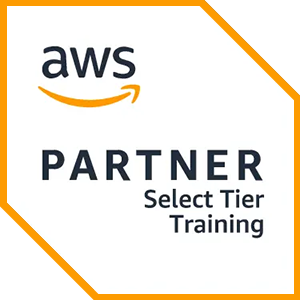Module 0: Managing HPE StoreOnce Backup Solutions
- Course introduction
- Managing HPE StoreOnce Solutions class agenda
Module 1: Product Introduction
- HPE StoreOnce backup systems
- New HPE StoreOnce product features and benefits
- HPE StoreOnce family comparison—features in HPE StoreOnce models
Module 2: Installation
- Installing HPE StoreOnce devices
- Available connections
- Network/iSCSI modes of operation
- Single port and dual port modes
- Fibre channel
- Initial configuration process
- HPE StoreOnce Gen4 firmware
Module 3: Web Management Interface
- HPE StoreOnce GUI
- HPE StoreOnce GUI—left-hand menu
- HPE StoreOnce GUI—federation dashboard
- HPE StoreOnce GUI—system dashboard
- HPE StoreOnce GUI—event log
- HPE StoreOnce GUI—settings
- HPE StoreOnce GUI—hardware
- HPE StoreOnce GUI—settings - security
Module 4: Virtual Tape Libraries
- HPE StoreOnce (D2D) backup systems
- Choosing VTL vs. NAS
- Virtual Tape Libraries (VTL)
- iSCSI and fibre channel connections to VTL
- Flexible emulations
Module 5: Basic HPE StoreOnce Catalyst
- HPE StoreOnce Catalyst overview and API
- ISV control of replication
- HPE StoreOnce Catalyst with Veeam
- HPE StoreOnce Catalyst with Commvault
- HPE StoreOnce Catalyst in Data Protector
- Deduplication options for low and high bandwidth transfers
- What is new in Catalyst?
Module 6: NAS Shares
- NAS shares and server configuration
- NAS share authentication
- HPE StoreOnce NAS limitations
Module 7: HPE StoreOnce Deduplication
- Deduplication—what is it and key benefits?
- Deduplication—data locality and ratios
- Housekeeping
Module 8: Replication of VTL and NAS Shares and HPE StoreOnce Catalyst Copy
- Definition and replication granularity
- Replication fan-out and fan-in
- Bi-directional replication
- Seeding the replication target
- HPE StoreOnce Catalyst Copy
- Replication recovery
- Making replication targets visible to host
- NAS replication and ‘seeding’
- VTL and NAS replication and configuration
- Low-bandwidth—multi-hop
Module 9: HPE StoreOnce Reporting and Appliance Federation
- Reporting
- Device selection example
- Viewing reports
- HPE Infosight
- Next generation HPE StoreOnce—management federation
- Overlapping federation scenario
- Creating a federation
- Different federation topologies
- Recommended networking topology
- System dashboard
- HPE StoreOnce High Availability Manager overview
Module 10: Cloud Bank and HPE StoreOnce Catalyst Advanced Features
- HPE StoreOnce Catalyst Cloud Bank and advanced features
- CloudBank use cases
- CloudBank configuration
- CloudBank disaster recovery
- HPE StoreOnce Catalyst Copy over fibre channel
- HPE StoreOnceCatalyst Copy over fibre channel—use cases
Module 11: Best Practices
- General best practices
- Flexible emulations best practices
- HPE StoreOnce replication best practices
- NAS share best practices
- Physical tape offload methods
- Security
- Active Directory
Module 12: Troubleshooting and Remote Support
- Backup or disk space problems
- Capacity thresholds
- Remote support via STATS (RSvS)
- Tools and updates
- Configuration and software updates—improved processes
- HPE StoreOnce Gen4 software upgrade
- REST API developer kit
- Reference documentation
Appendix A: StoreOnce Generation 3
- HPE StoreOnce portfolio—comparing Gen4 and Gen3
- HPE StoreOnce emulation specifications
- HPE StoreOnce—web management GUI
- HPE StoreOnce integrated graphical reporting
- Discuss HPE StoreOnce B6000 operations
- HPE StoreOnce B6000 terminology
Appendix B: HPE StoreOnce Recovery Manager Central (RMC)
- HPE StoreOnce Recovery Manager Central—key benefits
- What is HPE StoreOnce Recovery Manager Central (RMC)?
- HPE StoreOnce Recovery Manager Central concepts and components
- HPE StoreOnce Recovery Manager Central architecture
- Element Recovery (ERT) with HPE StoreOnce data path
- HPE StoreOnce Recovery Manager Central data protection deployment
- HPE 3PAR/HPE StoreOnce storage integration
- What is new in HPE StoreOnce Recovery Manager Central?
Appendix C: High Availability Manager
- High Availability Manager overview (version 4.2)
- High Availability Manager concept
- High Availability Manager limits
- Validation pre-checks
- Monitored status
- High Availability Manager Warranty Serial
Number (WSN)
- High Availability Manager failover check
- High Availability VSA—failover triggers
- Logging for High Availability Manager
lab outline
Lab 1: Configure an HPE StoreOnce backup system with storage and first-time configuration
Lab 2: Configure the HPE StoreOnce backup system
- License the HPE StoreOnce appliance
Lab 3: Backup to a VTL on HPE StoreOnce using Veeam and NAS using Windows backup
- HPE StoreOnce configuration using the management GUI
- Creating a NAS share
Lab 3a: Back up to a VTL on the HPE StoreOnce using Veeam
Lab 3b. Back up the files in Veeam
Lab 4: Data deduplication
Lab 5: Use the HPE StoreOnce GUI to create a HPE StoreOnce Catalyst Store and add it to Veeam as a backup repository
- Introduction to HPE StoreOnce Catalyst
- Terminology
- Hands-on lab introduction
- Hands-on lab sequence
- HPE StoreOnce Catalyst licensing
- Add the HPE StoreOnce Catalyst Store to Veeam and perform backups
- Create a backup job to back up data to an HPE StoreOnce Catalyst store
Lab 6: Data replication
- Overview
- Creating VTL and NAS shares on the target replication appliance
- Configure replication from your local HPE StoreOnce appliance
- Virtual tape library (VTL) mapping
- Configure replication of all the files on the NAS share
- Testing the replication of NAS and VTL
Lab 7: HPE StoreOnce Catalyst Copy within Veeam
Lab 8: Reports and federation




























 United Kingdom
United Kingdom Germany
Germany Denmark
Denmark Sweden
Sweden Italy
Italy Netherlands
Netherlands Finland
Finland














 Duration
Duration
 Delivery
Delivery  Price
Price